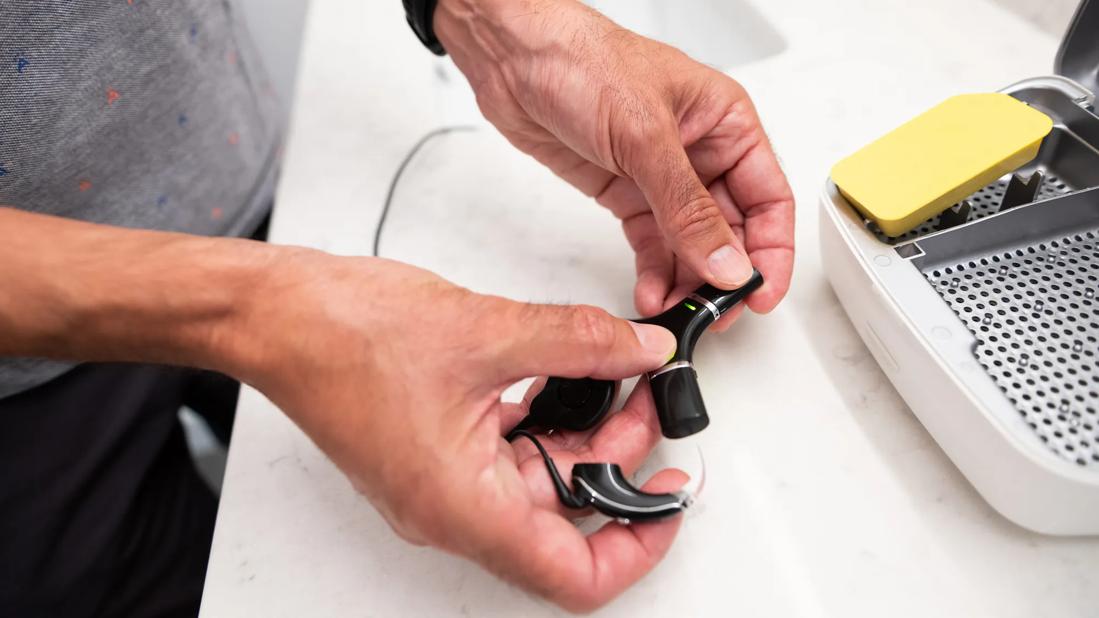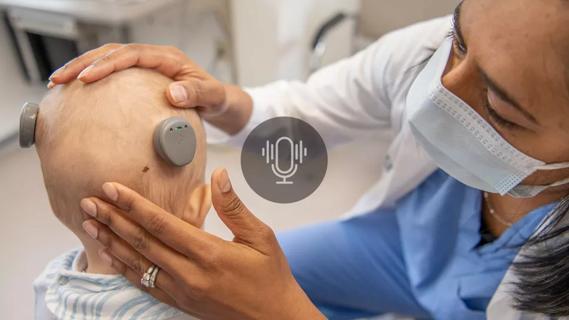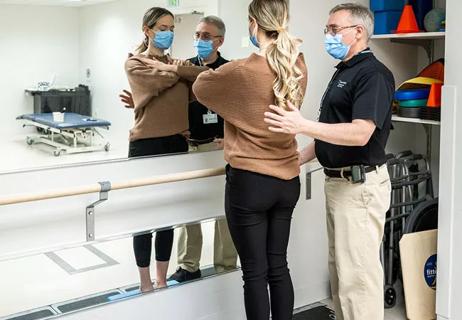Study shows no negative impact for individuals with better contralateral ear performance

At the 2025 American Cochlear Implant Alliance (ACIA) annual meeting, the Cleveland Clinic Hearing Implant Program (HIP) team presented compelling research supporting the safety and efficacy of cochlear implantation in patients who exceeded current FDA-labeled candidacy criteria. The study is part of an ongoing effort to increase access to cochlear implants for patients with significant hearing needs.
Advertisement
Cleveland Clinic is a non-profit academic medical center. Advertising on our site helps support our mission. We do not endorse non-Cleveland Clinic products or services. Policy
Once considered a last resort, cochlear implants were typically reserved for patients with profound bilateral hearing loss and little-to-no speech understanding even with hearing aids. However, over the last several decades, clinical experience and research have demonstrated that earlier implantation leads to better outcomes, especially in individuals with residual hearing or single-sided deafness.
“Unfortunately, labeling and insurance coverage haven't kept pace with clinical practice,” says Sarah Sydlowski, AuD, PhD, MBA, Audiology Director, Hearing Implant Program. “We often recognize someone as a candidate and offer the implant, but then struggle to get it covered. Right now, only about 2–5% of those who could benefit receive an implant, which is a terrible gap. A big part of the problem is a lack of awareness about how candidacy practices have changed, along with outdated FDA labeling and coverage policies.”
The Cleveland Clinic research team sought to address this gap in understanding. “Our study looked specifically at patients who were implanted off-label—those who would not have qualified under FDA indications, but who still showed clear need,” explains Dr. Sydlowski. “Our findings indicate a significant benefit, even when the contralateral ear performs well, or they have measurable residual hearing.”
First author Cheyanne Allan, AuD, a fellow in Cleveland Clinic’s Hearing Implant Program, Dr. Sydlowski and colleagues conducted a retrospective chart review of adult patients implanted between 2021 and 2024 at the Cleveland Clinic who exceeded the FDA’s labeled criteria at the time of implantation — either because their aided speech understanding was too high or because their contralateral ear or bilateral performance exceeded the current thresholds. There were 113 recipients who qualified for inclusion.
Advertisement
The average pre-operative sentence scores in quiet highlighted the off-label nature of the patient cohort: approximately 30% in the ear scheduled for implantation, 75% in the contralateral ear, and 85% bilaterally. Notably, most participants had a significant degree of residual hearing. The average low-frequency PTA was 63 dB, with a broad range of unaided thresholds, many of which fell outside current labeled indications.
Preoperatively, the majority of patients had CNC word recognition in the ear to be implanted < 40%; the remaining recipients (16.8%) scored up to 48%. Post-implantation outcomes revealed statistically significant improvements across all speech recognition conditions. The most rapid gains were seen in quiet for in the implanted ear, with progress evident early and largely sustained through 12 months post-activation. Improvements in background noise were also observed, though they were more gradual.
Importantly, the study found no negative impact on outcomes for individuals with better contralateral ear performance—a finding that challenges the conventional belief that stronger performance in one ear should preclude implantation in the other.
“There’s still this assumption that if someone has one ‘good’ ear, they’re not a candidate,” Dr. Sydlowski says. “But we’re seeing that cochlear implantation in one ear, even with a well-performing contralateral ear, improves hearing and quality of life.”
Another key finding was the lack of correlation between residual hearing loss post-surgery and functional outcomes. While the average patient experienced a 25 dB drop in low-frequency hearing after implantation, there was no statistically significant link between this change and speech recognition at one or 12 months. Dr. Sydlowski notes that this suggests that loss of residual hearing is not a contraindication to implantation.
Advertisement
The Cleveland Clinic team hopes this research contributes to the growing body of literature supporting expanded cochlear implant candidacy and, ultimately, policy change.
“Our program uses ear-specific CNC word scores of 50% or less in the ear to be implanted, consistent with American Cochlear Implant Alliance (ACIA) guidelines,” Dr. Sydlowski notes. “This approach better reflects clinical reality and allows us to reach patients earlier, before their hearing loss becomes even more debilitating.”
She also emphasized the need for audiologists and referring providers to become more comfortable with evolving candidacy criteria. “Audiologists who work closely with cochlear implant specialists see firsthand how well patients do,” she said. “But for those outside CI centers, perceptions may still be outdated. I can’t tell you how many patients say, ‘I wish I had known about this sooner.’ That’s what we’re trying to change.”
Final analyses for this study are currently underway, and the team is preparing to publish their data. They are also involved in a multicenter clinical trial aimed at gathering further evidence to support FDA labeling updates. Recruitment is complete, and the results will help inform the next generation of candidacy guidelines and insurance policies.
“We need robust, multi-institutional data to show regulators and payers that this isn’t experimental—it’s best practice,” urges Dr. Sydlowski. “And the more we educate the broader audiology and medical community, the better we’ll be at getting patients the care they deserve.”
Advertisement
“This is life-changing technology, and 98% of those who could benefit aren’t using it. It’s time to change our approach as a whole and offer care earlier,” she concludes.
Advertisement
Advertisement

Expanded patient criteria and surgical advances mean more patients can benefit

Recommendations look to change mindset with CI referrals

Research on children with UHL explores the quality-of-life benefits and outcomes of cochlear implants

Detailed surgical process uncovers extensive middle ear damage causing severe pain and pressure.

When a patient failed to improve, the value of a comprehensive vestibular test was apparent

Case study illustrates the potential of a dual-subspecialist approach

Evidence-based recommendations for balancing cancer control with quality of life

HNS device offers new solution for those struggling with CPAP